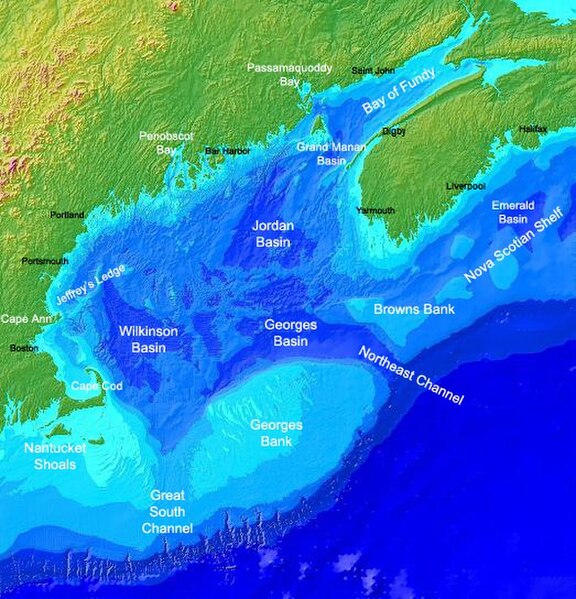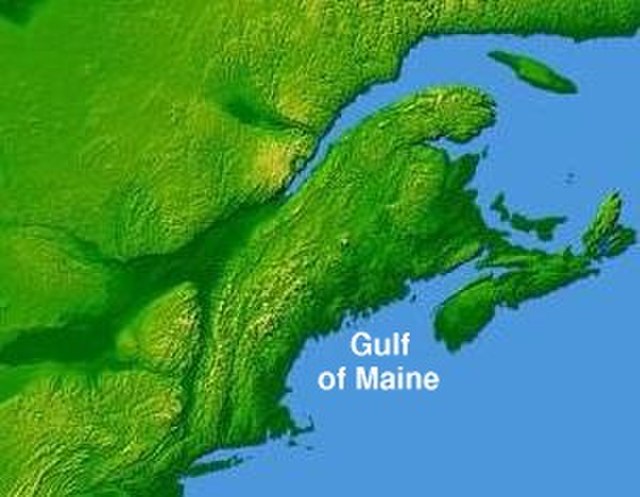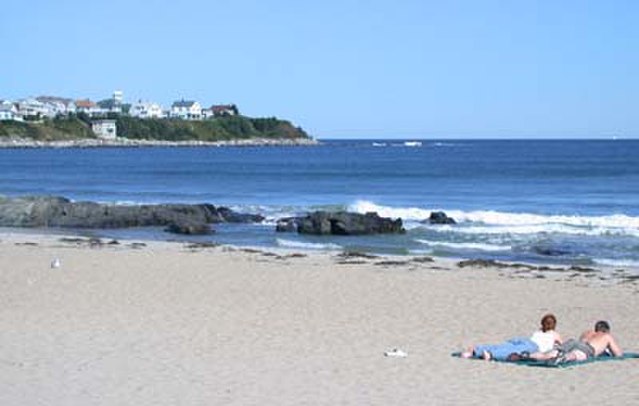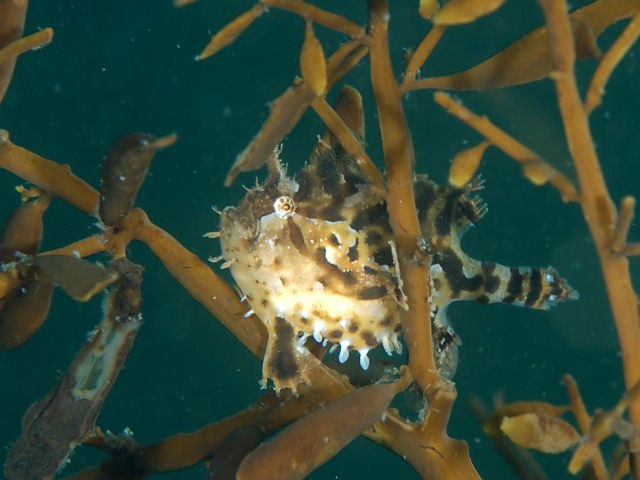The Gulf of Maine is a large gulf of the Atlantic Ocean on the east coast of North America. It is bounded by Cape Cod at the eastern tip of Massachusetts in the southwest and by Cape Sable Island at the southern tip of Nova Scotia in the northeast. The gulf includes the entire coastlines of the U.S. states of New Hampshire and Maine, as well as Massachusetts north of Cape Cod, and the southern and western coastlines of the Canadian provinces of New Brunswick and Nova Scotia, respectively.
Major features of the Gulf of Maine
A number of states and provinces along the North American coast drain into the Gulf of Maine. Much of that region is depicted here.
S. latissima, one of the most abundant of the Saccharina species in the Gulf of Maine
Hampton Beach, New Hampshire, in mid-September 2004
The Atlantic Ocean is the second-largest of the world's five oceans, with an area of about 85,133,000 km2 (32,870,000 sq mi). It covers approximately 17% of Earth's surface and about 24% of its water surface area. During the Age of Discovery, it was known for separating the New World of the Americas from the Old World of Afro-Eurasia.
As the Gulf Stream meanders across the North Atlantic from the North American east coast to Western Europe its temperature drops by 20 °C (36 °F).
Path of the thermohaline circulation. Purple paths represent deep-water currents, while blue paths represent surface currents.
Sargassum fish (Histrio histrio)
Iceberg A22A in the South Atlantic Ocean








